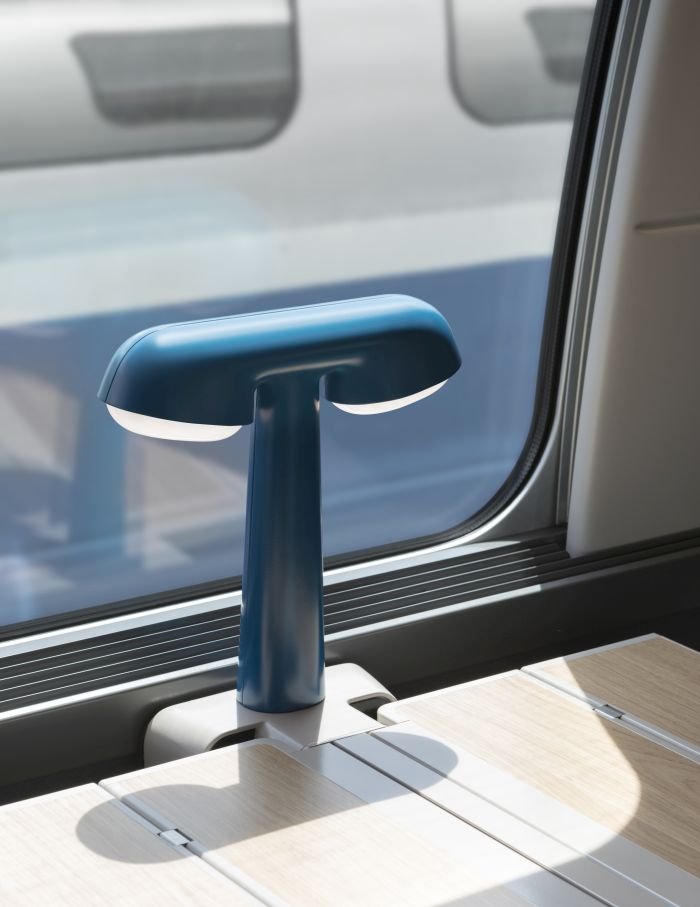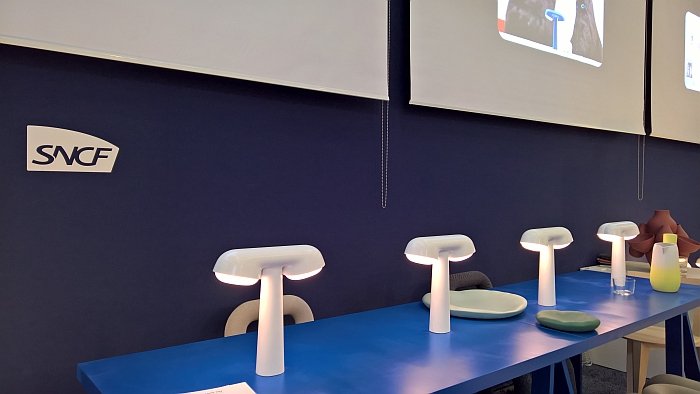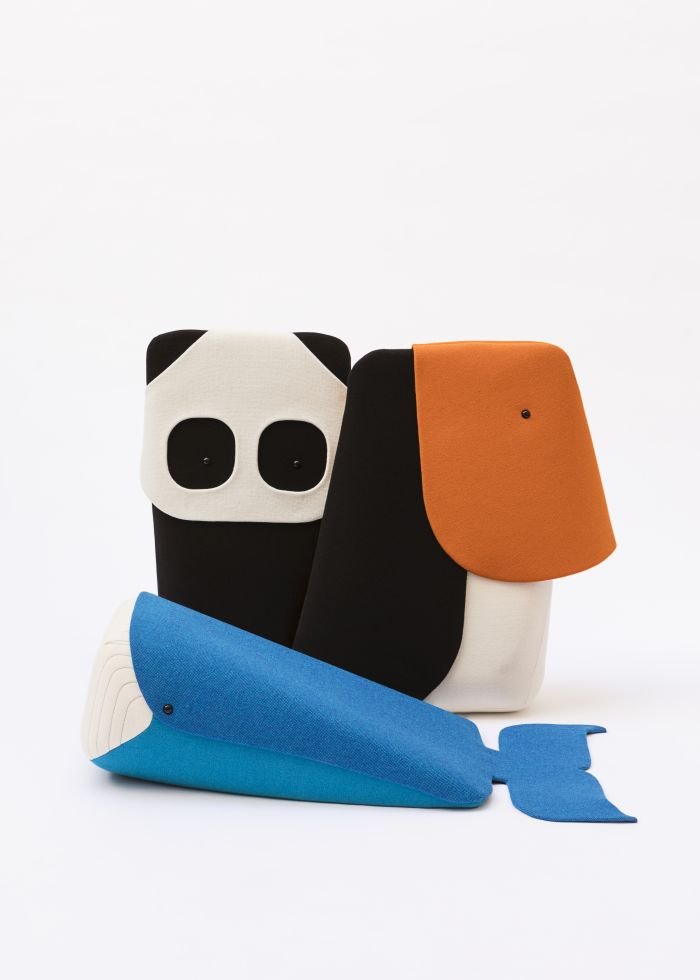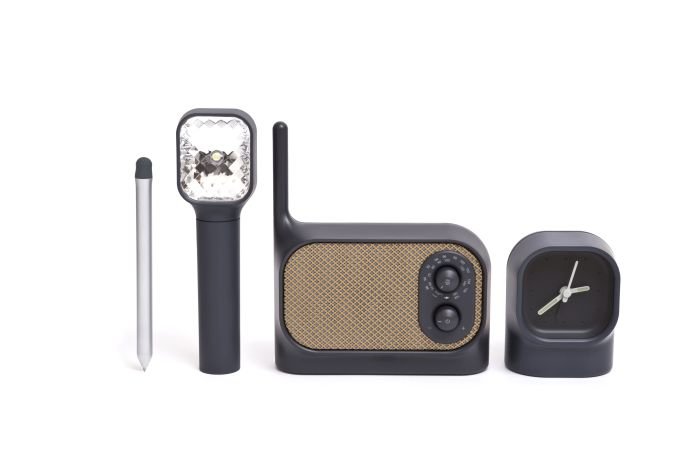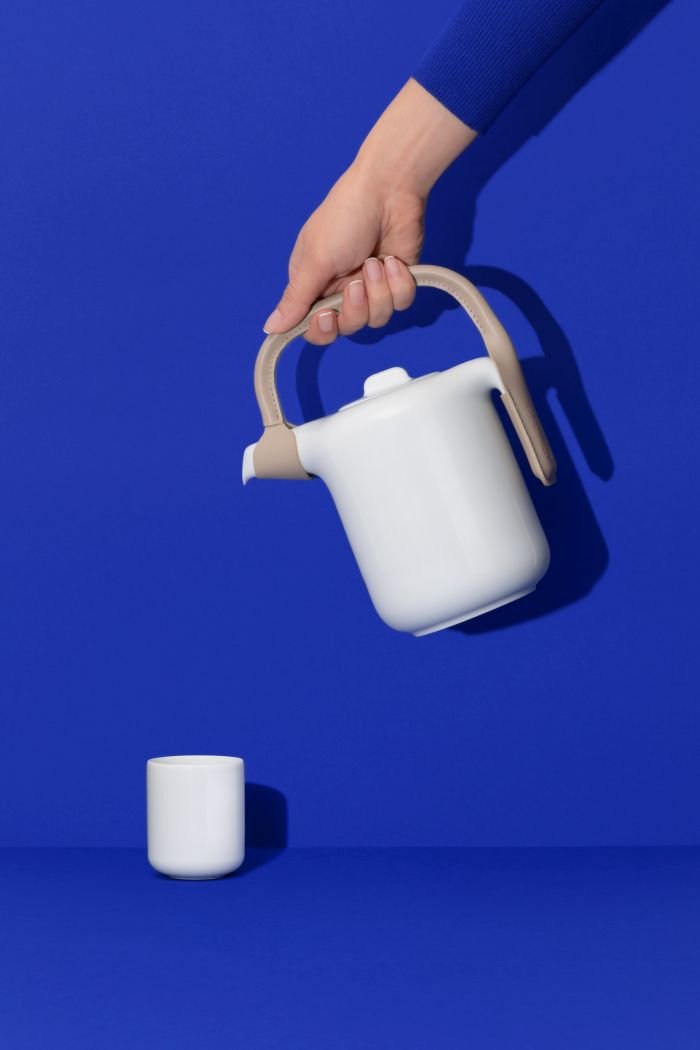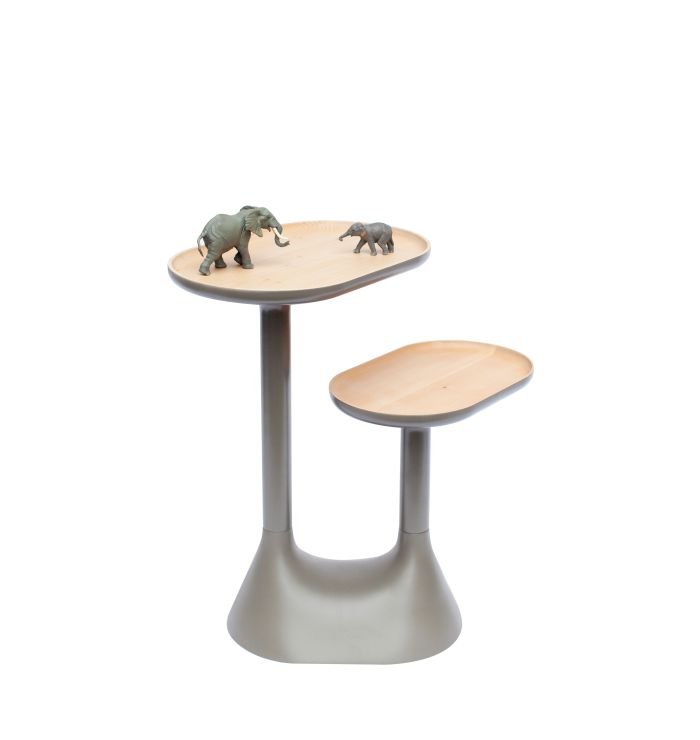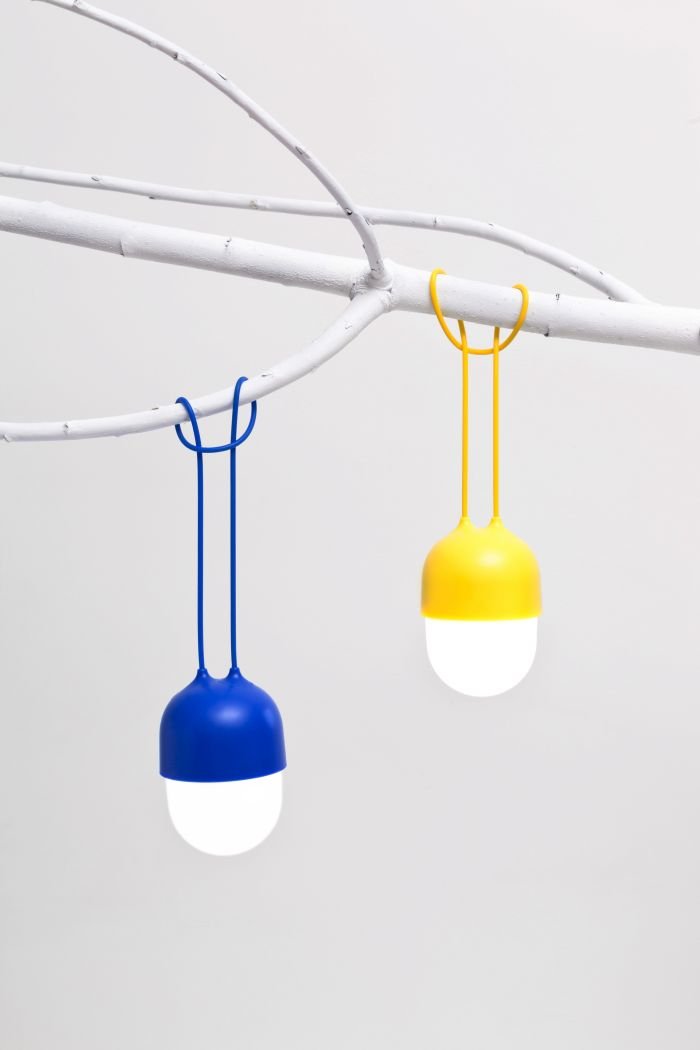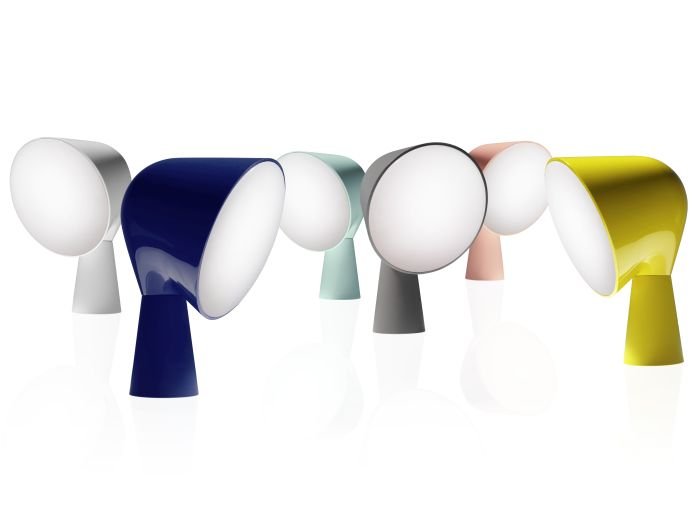French designer Ionna Vautrin first reached a broad international public with her Binic lamp for Italian manufacturer Foscarini, a design which, it's fair to say, is/was one of those genuinely, gloriously, joyous moments in the (hi)story of lighting design, a work full of character yet devoid of vanity, universally applicable yet always individual.
Ionna Vautrin is however more than Binic: before Binic Ionna had enjoyed a varied, international career working with a diverse roster of studios and across an equally diverse range of design genres. Since Binic Ionna had enjoyed a varied, international career working with a diverse roster of manufacturers and across an equally diverse range of design genres.
Keen to know more we met up with Ionna Vautrin in Paris.......
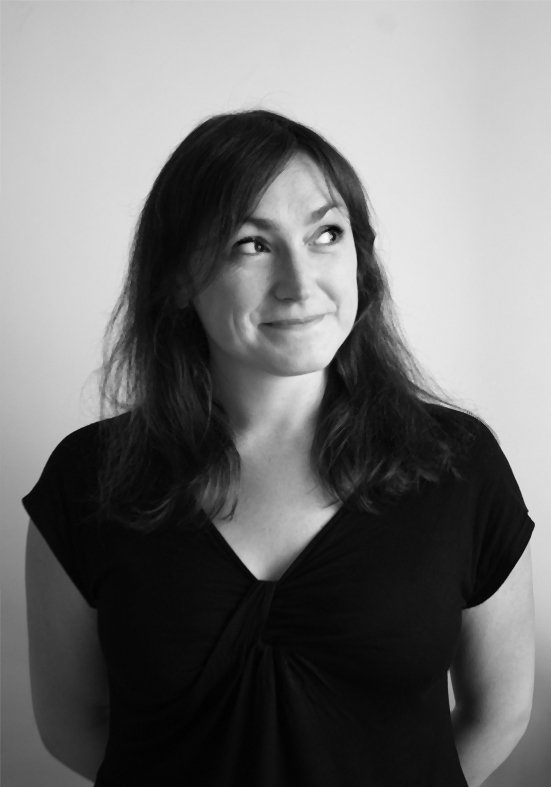
Following her studies at l'école de design Nantes Atlantique Ionna Vautrin swapped in 2002 France's Atlantic coast for the Mediterranean and a position with shoe manufacturer Camper on Mallorca, before moving on to Milan where she served as an assistant to Memphis alumni George Sowden, a tenure that not only saw her work (principally) on consumer electronics projects with Sowden but also develop her first independent projects. Returning to France in 2005 Ionna initially worked on the development of perfume bottles, "a very industrial process" as she recalls, before spending five years as an assistant to Ronan and Erwan Bouroullec in Paris.
In 2011 Ionna took the decision to establish her own studio, and from where she has realised projects for clients as varied as, and amongst many others, De Vorm, Kvadrat, Serralunga or Foscarini, and most recently for the French national train operator SNCF for whom she designed a new lamp for their high-speed TGV fleet, and a lamp subsequently released as a product in cooperation with Paris based éditeur Moustache. To learn more we met up with Ionna Vautrin to discuss her career, work and approach to design, but started, as ever, by asking why the decision to follow a career in design................
Ionna Vautrin: As a child I attended over many years a ceramic atelier especially for children, and loved that, I loved being close to the material and to be able to produce objects. I have in addition always sketched and so in a way I arrived very naturally at design. However, I did also seriously consider cooking as a career, and I think there are a lot of similarities between design and cooking, both are concerned with formal aspects, understanding your materials, and also about people, for all bringing pleasure to people, but cooking is much more regimented, in design one is much freer and so I think in design I choose the simpler of the two!
smow Blog: And having decided for design, why the decision to study in Nantes......?
Ionna Vautrin: The short answer is that I am from Brittany and Nantes was the closest to my home! However as a course it was focussed principally on industrial design, which is what I like, it was a very practical, very technical course including lots of studies on materials, on the properties and possibilities of materials, and also with a lot on internships and so for me it was exactly what I wanted, exactly that which interests me.
smow Blog: Then after graduating you spent some nine years working for a range of companies and studios, that means you had no initial plans to establish your own studio, or.....
Ionna Vautrin: ......when I graduated I was sure that one day I would have a studio, but it wasn't necessarily an ambition to have a studio with my name alone on the door; however, the various experiences I made at each stage, meant that, project for project, it all came around quite naturally. And one of the main motivations for establishing a studio by myself was to have the freedom to choose the type of projects I work on, be that clothing, furniture, lighting, having had such varied experiences I wanted to ensure that I continued to have that freedom, and that meant my own studio. It was quite a long way but for me was definitely the correct way.
smow Blog: Turning to such projects, when we look at your work its strikes us as being very graphic, which leads us to to assume you always start with a sketch, correct.....
Ionna Vautrin: Yes, I always start with a sketch, and then when I have a sketch that I am happy with I move on to 3D computer modelling, which for me is very similar to sketching, is an extension of the sketching, with the advantage I can better judge proportions and forms, for me the development of the shape is very important and I like to conjugate really linear, geometric forms with organic forms.
smow Blog: And having spent so many years with ceramics as a child, do you think that influences the way you approach a project?
Ionna Vautrin: Yes possibly. Ceramics are a human material, very traditional material, yet one which allows for very technical objects, and also one that allows me to develop forms as I understand them, l can't really do purely rectangular objects, for me it needs to be something that relates more to the human, to human forms, we all have our curves, our movements, and so should our objects, and so when I have the freedom to choose a material than I tend to choose something like ceramic which allows me to develop shapes I am happy with.
smow Blog: Your first commercial projects were realised while you were in Milan, was that case of you "cold calling" manufacturers with proposals, or how did those first project arise....
Ionna Vautrin: ....when I moved to Italy it was the beginnings of 3D printing, and together with some other young designers we organised the exhibition Industwetrust during Milan Design Week which explored the potentials of this new production method, and that was such as success that the éditeur Industreal was established to produce some of the works from the exhibition, including some of mine. And then it was case of always developing my own projects, slowly, project for project, while always working parallel in another studio, and then in 2009 Foscarini contacted me, which was very nice, very unexpected, with the brief for a small affordable lamp, I presented a few proposals from which one became Binic, and that was then where everything really starts for me......
smow Blog: So that was during your time with Studio Bouroullec.....
Ionna Vautrin:......yes, Binic was released in 2010 and that was the moment when I decided to establish my own studio, the moment when this process that I spoke of earlier reached that very natural point where it was clear I had to take that step.
smow Blog: Binic is famously based on the dorade ventilation funnels found on boats, can you remember the moment you moved towards that form?
Ionna Vautrin: No, but I have always liked this object, the sea is very important in Brittany, when I was young we spent a lot of time by the sea, but also in Mallorca there was always boats around me, and so the object has always been near me, and has always appealed to me and in a way it was very natural that I would use it at some point.
smow Blog: Those early projects were, predominately, with Italian companies, these days you have mix of French and non-French companies, how is the current situation in France, are there manufacturers with whom you can cooperate?
Ionna Vautrin: In France companies tend to be more reserved, less keen on taking risks, certainly in comparison with Italian or Spanish companies, however today there are ever more who are interested in producing contemporary design, who are led by design and a design philosophy, but they tend to be relatively small éditeurs such Petite Friture or Moustache, and so the situation is changing, but slowly
smow Blog: Since you mentioned Moustache, how did the TGV lamp begin, did SNCF contact you, or....
Ionna Vautrin: Yes, but that also started with the Binic lamp. When they were developing the trains they knew they wanted a lamp but didn't yet have one and so in all their 3D files they placed Binics where the lamps should be, simply because they liked Binic, and then one day decided it made sense, since they liked my lamp, and it was already in their carriages, to contact me to ask if I'd be interested in developing a new lamp for the train.....
smow Blog: Nice...... Very nice..... And how was then the experience of developing a project for such a large, industrial, client.....?
Ionna Vautrin: It was an interesting, very different sort of project, on the one side you had SNCF who are a really large company with all their decision process channels, and on the other you have the technical partner Alstom who have their technical parameters that you need to fit in with.....
smow Blog: ....... and your parameters.....
Ionna Vautrin:.......with the lamp I wanted to focus on people, to create a lamp for everyone and in the development of the lamp I was inspired on the one hand by historic trains where you had art deco lamps with two lamps shades, and also the trains of Roger Tallon, I love the really rounded trains from Tallon, so it is a mix of all those things. But it also involved working very closely with the Alstom engineers to ensure that we got a result that was as close as possible to my design, whereby I think I was their worst nightmare, it probably took longer to finalise the shape of the lamp than design the whole train!
smow Blog: You mean you're quite specific on these things?
Ionna Vautrin: Very, I have a very specific idea of how something should be and what I want to achieve, and tend to be quite insistent, as I said earlier, the development of the shape is very important for me. But Alstom were excellent, and in the end everybody was very happy with the outcome, and I am a really proud of what we achieved, which also reinforces for me that it is important to always be precise and exact about what you want.
smow Blog: And briefly to end, as a designer is Paris a good place to be based?
Ionna Vautrin: Yes, as a city it has a lot of culture, a lot of energy which I really enjoy, and it is also very central which is important, and I think being based anywhere else in France would make it much more difficult. However it is also nice to have somewhere outside to retreat to.....
smow Blog: .....so you go back to Brittany regularly...
Ionna Vautrin: ....these days its Normandy!
smow Blog: ......is that allowed? But don't worry we'll not tell. And looking to the future, how and where would you like to develop?
Ionna Vautrin: For me the most important in a project is that the relationship to client is good, and so that is important in deciding what I do, which projects I accept. I know the fact that I can do that is a bit of a luxury, but I don't want to become a big studio with several assistants, much more I want to keep on designing things myself, keep doing that what I set up the studio to do, to develop a wide range of projects which interest me.
Full details on Ionna Vautrin and her work can be found at www.ionnavautrin.com
